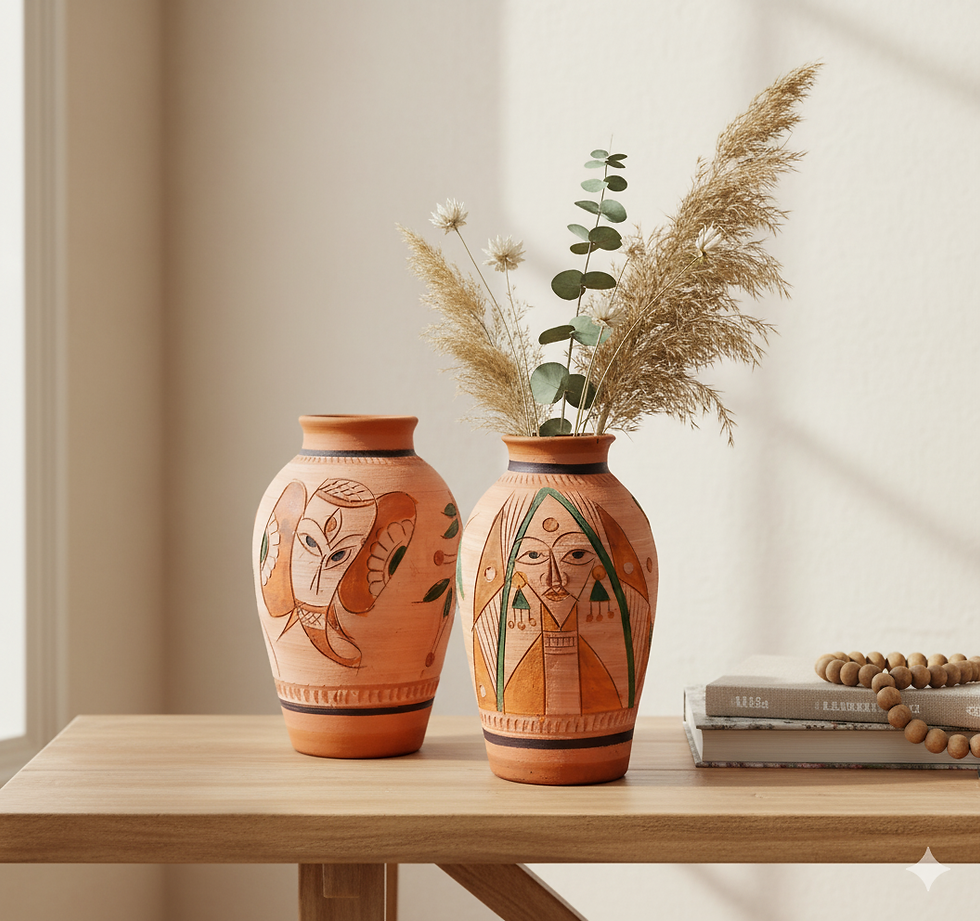The Cultural Significance Behind Traditional Indian Jewelry
- Sep 5
- 4 min read
Traditional Indian jewelry is much more than just an accessory. It carries deep cultural, religious, and social meanings that have been passed down through generations. Each piece tells a story, reflecting the rich heritage and diverse traditions of India. This blog post explores the cultural significance behind traditional Indian jewelry, its symbolism, and how it continues to influence fashion today.
The Rich Heritage of Indian Jewelry
Indian jewelry has a history that dates back thousands of years. Archaeological findings from the Indus Valley Civilization reveal that jewelry was an integral part of life even in ancient times. Over centuries, Indian jewelry evolved with influences from various dynasties, including the Mughals, Rajputs, and Marathas, each adding unique styles and techniques.
Jewelry in India is often made from precious metals like gold and silver, adorned with gemstones such as diamonds, rubies, emeralds, and pearls. The designs vary widely across regions, reflecting local customs and beliefs. For example:
Kundan jewelry from Rajasthan is known for its intricate setting of gemstones in gold.
Temple jewelry from South India features motifs inspired by gods and goddesses.
Meenakari work involves colorful enamel designs, popular in Jaipur.
These styles are not only beautiful but also carry symbolic meanings related to prosperity, protection, and spirituality.

Understanding the Symbolism in Indian Jewelry
Every piece of traditional Indian jewelry has a purpose beyond decoration. It often symbolizes important life events, social status, and religious beliefs. Here are some common symbolic meanings:
Mangalsutra: A sacred necklace worn by married Hindu women symbolizing marital status and the husband's long life.
Nath (Nose ring): Traditionally worn by brides, it signifies beauty and respect for cultural customs.
Bangles: Represent prosperity and good fortune. Married women often wear glass or gold bangles as a sign of their marital status.
Toe rings (Bichiya): Worn by married women, symbolizing their commitment and fertility.
Maang Tikka: Worn on the forehead, it represents the third eye or wisdom.
Jewelry is also believed to have protective qualities. For instance, certain gemstones are thought to ward off evil spirits or bring good luck. This blend of aesthetics and spirituality makes Indian jewelry unique and meaningful.
Can I wear Indian jewelry if I'm not Indian?
Absolutely! Indian jewelry is admired worldwide for its craftsmanship and beauty. Wearing traditional Indian jewelry can be a wonderful way to appreciate and celebrate Indian culture. However, it is important to approach it with respect and understanding of its cultural significance.
Here are some tips for non-Indians who want to wear Indian jewelry:
Learn about the jewelry: Understand the meaning behind the pieces you choose to wear.
Choose appropriate occasions: Indian jewelry is often worn during festivals, weddings, and special events. Wearing it in similar contexts can show respect.
Mix and match thoughtfully: You can pair Indian jewelry with contemporary outfits to create a fusion look.
Support artisans: Consider purchasing from authentic sources that offer handcrafted indian jewelry to honor the craftsmanship and tradition.
By embracing Indian jewelry with respect, you can enjoy its beauty while honoring its cultural roots.

The Craftsmanship Behind Handcrafted Indian Jewelry
The art of making traditional Indian jewelry is a skilled craft passed down through generations of artisans. Each piece is meticulously handcrafted, often involving multiple techniques such as filigree, engraving, stone setting, and enameling.
For example, the process of creating a Kundan necklace involves:
Selecting high-quality gold and gemstones.
Shaping the gold into intricate designs.
Setting the stones carefully without glue, using pure gold foils.
Polishing and finishing to enhance the shine.
This labor-intensive process results in jewelry that is not only beautiful but also durable and valuable. When you buy handcrafted indian jewelry, you are supporting these artisans and preserving a centuries-old tradition.
The attention to detail and the cultural stories embedded in each piece make Indian jewelry a treasure worth cherishing.

How to Incorporate Traditional Indian Jewelry into Modern Fashion
Traditional Indian jewelry can be a stunning addition to modern wardrobes. Here are some practical ways to incorporate these timeless pieces into everyday or special occasion outfits:
Statement earrings: Pair large jhumkas or chandbalis with simple western dresses to add a touch of elegance.
Layered necklaces: Combine delicate chains with a bold traditional necklace for a chic look.
Bangles and bracelets: Mix traditional bangles with modern bracelets for a unique wrist stack.
Anklets: Wear silver anklets with casual or ethnic-inspired outfits.
Brooches and pins: Use traditional motifs as brooches on coats or scarves.
When styling, balance is key. Let the jewelry be the focal point by keeping clothing simple and neutral. This approach highlights the craftsmanship and cultural beauty of the pieces without overwhelming the overall look.
The Enduring Legacy of Indian Jewelry
Traditional Indian jewelry continues to be a symbol of cultural identity and artistic excellence. It connects people to their heritage and celebrates the diversity of Indian traditions. Whether worn during festivals, weddings, or as everyday adornment, these pieces carry stories of love, faith, and artistry.
By appreciating the cultural significance and craftsmanship behind Indian jewelry, we can keep these traditions alive and inspire new generations to value their heritage. Whether you are exploring your roots or simply admiring the beauty, traditional Indian jewelry offers a timeless connection to history and culture.




Comments